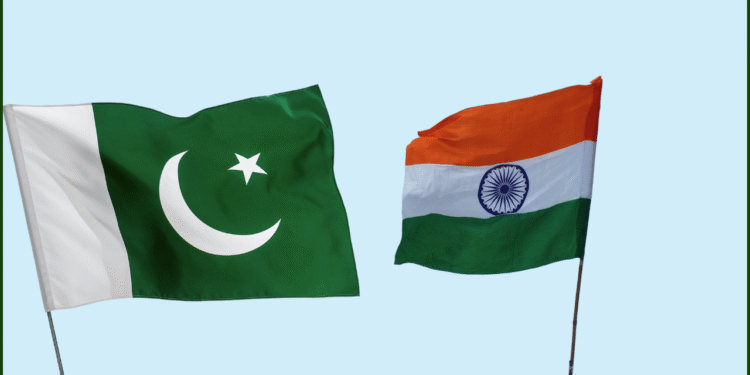New Delhi/Islamabad, May 10, 2025 – In a significant step toward de-escalation, India and Pakistan have agreed to an immediate ceasefire, halting all military operations across land, air, and sea. The announcement, first made by U.S. President Donald Trump on Saturday, was swiftly confirmed by key officials from both nations, signaling a potential pause in one of the most intense military confrontations between the two nuclear-armed neighbors in recent years.
Diplomatic Breakthrough Amid Rising Tensions
The ceasefire follows days of heightened military exchanges, including missile strikes and drone incursions, which had raised fears of a broader conflict in South Asia. The agreement was solidified after intense diplomatic efforts, with U.S. officials playing a pivotal role in facilitating dialogue. U.S. Secretary of State Marco Rubio revealed that he and Vice President JD Vance engaged with top leaders from both countries, including Indian Prime Minister Narendra Modi, Pakistani Prime Minister Shehbaz Sharif, and other senior military and security officials, over the past 48 hours.
In a statement shared on social media, Rubio emphasized that the ceasefire paves the way for broader negotiations, stating, “Both nations have committed to starting talks on a wide range of issues at a neutral location, reflecting a shared commitment to peace.”
Official Confirmations from India and Pakistan
Indian External Affairs Minister S. Jaishankar confirmed the cessation of hostilities, underscoring India’s unwavering stance against terrorism. “India and Pakistan have reached an understanding to suspend all firing and military actions,” Jaishankar said in a post on social media. “Our nation remains resolute in combating terrorism in all its forms, and this position will not waver.”
In New Delhi, Foreign Secretary Vikram Misri elaborated during a press briefing, noting that the ceasefire, effective immediately, was the result of sustained diplomatic engagement. “This decision reflects a mutual interest in preventing further escalation and restoring stability,” Misri stated.
On the Pakistani side, Deputy Prime Minister and Foreign Minister Ishaq Dar echoed the sentiment, affirming the ceasefire on social media. “Pakistan has always pursued peace and stability in the region while steadfastly defending its sovereignty,” Dar said, signaling Islamabad’s commitment to the agreement.
Roots of the Conflict
The recent flare-up in tensions traces back to a deadly attack on April 22 in Pahalgam, Jammu and Kashmir, which claimed 26 lives. India attributed the attack to elements based in Pakistan, a claim Islamabad categorically denied. In response, India imposed stringent measures, including suspending the Indus Waters Treaty—a critical water-sharing agreement—and closing the Wagah border crossing. Pakistan condemned the suspension as an “act of aggression” and retaliated by sealing its side of the border.
The situation escalated further with reported explosions in Pakistani cities on May 6–7, which Pakistan attributed to Indian airstrikes. In response, Pakistan launched Operation Bunyan-un-Marsoos, targeting Indian military installations. Both sides reported intercepting drones and missiles, with Pakistan claiming to have downed several Indian fighter jets and India acknowledging limited damage to some of its airbases.
A Conditional Truce
While the ceasefire marks a critical de-escalation, underlying issues remain unresolved. Indian officials have clarified that the suspension of the Indus Waters Treaty will continue, alongside other measures such as visa restrictions for Pakistani nationals. Sources indicate that the ceasefire is conditional, with India maintaining its firm stance against cross-border terrorism.
Pakistan, meanwhile, has emphasized its defensive posture, with military officials highlighting the success of their air defenses in countering Indian incursions. The launch of the Al-Fatah missile, described by Pakistan as a tribute to civilian victims, underscored the emotional weight of the conflict for both nations.
Global Response and Future Prospects
The international community has welcomed the ceasefire, with the U.S. and G7 nations urging both countries to sustain the truce and engage in meaningful dialogue. President Trump, in his announcement, praised both nations for their “common sense and great intelligence” in choosing peace over prolonged conflict.
However, challenges lie ahead. India’s insistence on maintaining punitive measures and Pakistan’s emphasis on sovereignty suggest that the path to lasting stability will require delicate negotiations. The proposed talks at a neutral venue offer hope, but the agenda and timeline remain unclear.
As both nations step back from the brink, the ceasefire provides a critical opportunity to address longstanding grievances and rebuild trust. For now, the suspension of hostilities brings a sigh of relief to a region that has endured weeks of uncertainty and fear.

















































